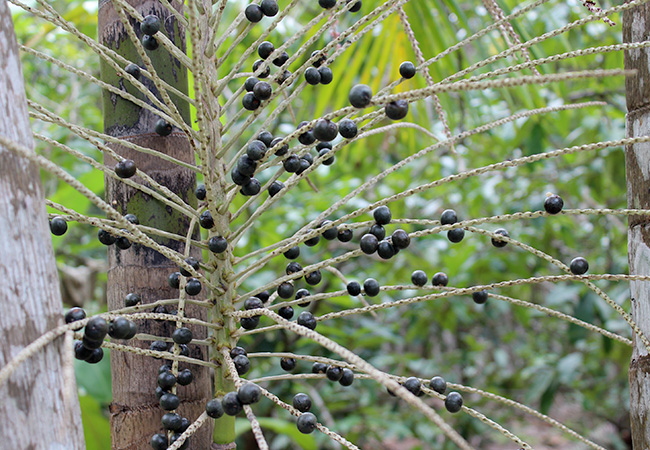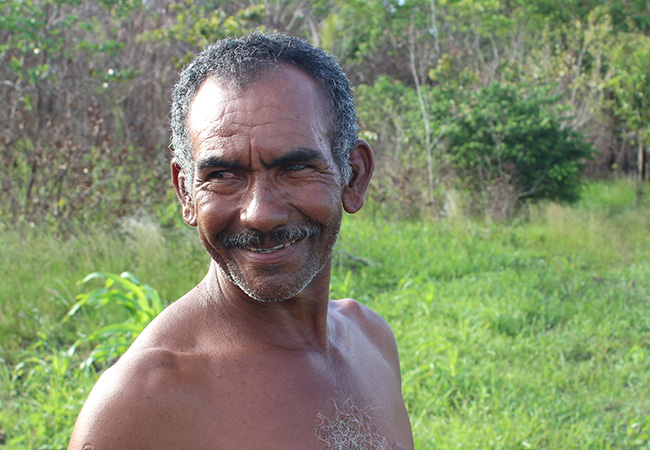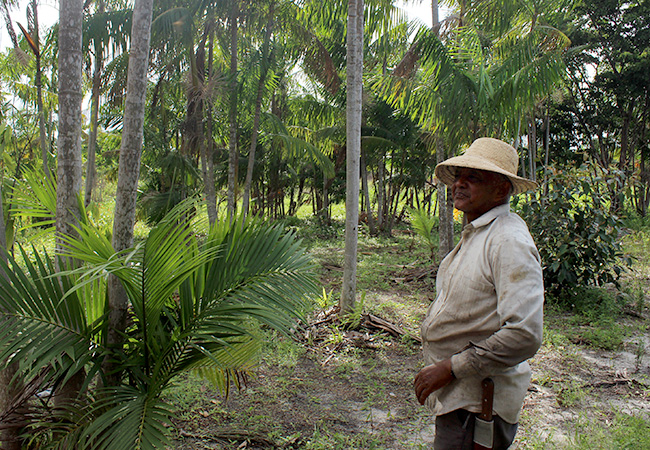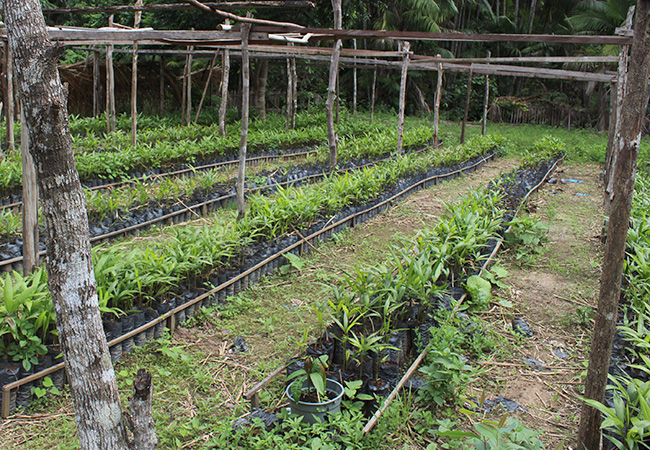Agriculture
Maranhão ranks third in national production of acai berries
April 09, 2018 09h00 AM | Last Updated: June 05, 2018 10h24 AM
With its production concentrated in the northeast of the State, Maranhão has increased the harvesting of acai berries in the last five years, consolidating its leadership in the production of the fruit. Nowadays, the state occupies the third place in the national ranking of acai, a typical ingredient of the local cuisine.
Data from the survey of Forestry Activities (PEVS), carried out by the IBGE, confirm the phenomena. In 2012, for instance, 12.3 thousand metric tons of the product were collected, keeping the trend in the following years, to reach 17.5 thousand metric tons in 2016. Maranhão was one of the few states where there was growth of the harvesting throughout the period.
According to 2016 data, the main producer of acai berries in Brazil is still the state of Pará, where 131,836 metric tons were harvested in 2016. Next are Amazonas (57,572 metric tons), Maranhão (17,508 metric tons), Acre (4,459 metric tons), Amapá (2,627 metric tons) and Rondônia (1,605 metric tons).

Maranhão was the third greatest acai producer in 2016 according to the IBGE

Producer Gervásio dos Santos Teixeira, 64 years old, belongs to the Cidade Nova Community

Josias Pereira dos Santos has the production of acai berries the main economic activity of his property

Fires destroy acai, especially in the 2nd half of the year

Part of the acai production of José Azevedo Filho is cultivated through plant seedlings

José Azevedo Filho has worked with the product for 14 years
Nova Olinda in Maranhão is the state's main producer
It is in the northwest of Maranhão where the municipalities which concentrate most of the acai berry production of all state are. The harvesting of the fruit has been increasing gradually throughout the last years, coming as first in the production of the fruit in the state.
The municipality of Nova Olinda of Maranhão (about 360 km from São Luís) is the main producer of acai berries in the state, with a collection of 2,404 metric tons in 2016. In the last five years, the production in the area grew, mostly between 2014 and 2015, when the collection of the fruit increased 222.5%, going from 683 to 2.203 metric tons.
The municipality of Luís Domingues (570 km away from São Luís) had a little drop in the production between 2014 and 2015, but still occupies the second position in the ranking of the cities in Maranhão to produce acai berries, with 1,790 metric tons collected in 2016.
It is in this municipality that the property of José Azevedo Filho, 47 years old, is found. “Donda”, as he is called, bought the farm 14 years ago and was one of the pioneers in the acai berry collection in the area, when everybody else believed the activity was not profitable.
Today he reaps the investment he sowed and, even working with livestock and other cultures, his strong point is acai harvesting. "And year after year, we've been increasing the planting", says the producer. The collection is carried out both in the planted areas and through the wild-crop harvesting inside his property.
Nowadays, a 15-kg-can of acai is sold on average at R$30.00. Every harvest represents nearly 2,500 cans, which provides producers with a good profit.
Fires destroy part of production
One of the challenges faced by local producers are the fires that destroy a great part of the production. In the second half of the year, because of the high temperatures in the region, this problem becomes even more frequent and devastating.
José Azevedo experienced a situation such as this twice. The first one took place in 2006 and the second, in 2012. In both of them, the producer had to pay the price. "Fires are a serious issue. And the wind spreads them. It breaks our heart to see it", cries out the producer.
A similar situation was faced by producer Gervásio dos Santos Teixeira, 64 years old, from the Colônia Cidade Nova Community, in the municipality of Boa Vista do Gurupi (approximately 500 km from São Luís).
He said that part of the household income comes from acai collection and, as the fires stroke his property some years ago, his budget decreased. However, the producer has not given up. "We are trying to do everything again. There is no other way, we cannot stop, " he says.
Landowner Josias Pereira dos Santos, 64 years old, also had problems because of the fires. With a property of nearly 21 hectares, he plants other cultures in his establishment, but acai collection is the main activity. However, in November last year, the fires destroyed around 500 acai trees, bringing financial losses. "It is such big damage that you could cry over it a whole lifetime", he claims.
Important source of minerals
Abundant in the North Region and in some states of the Northeast, acai berries have several uses. The main one has to do with their nutritional aspects: the fruits are an important source of minerals such as iron, calcium, phosphorus and some vitamins as well. Palm heart is also harvested for consumption.
The fruit extract is used in cosmetics and esthetics, for soaps, body oils and others. As the pulp is extracted, the seed is reused either in craftsmanship or as an organic fertilizer after it decomposes.
In São Luís, in October and November, there is the traditional Festival of Juçara (name by which the palm heart is called in Maranhão, regardless the difference between the two fruits). The event has been on for almost 50 years in the Maracanã region, located in the rural area of the capital of the state.
According to the local traders, an average of more than 10 thousand liters of the fruit pulp is sold every day during the festival. There the fruit can be tasted pure or with sugar, or with dried shrimp, flour and several other ingredients as the visitor wish, just like it happens all over Maranhão.



















